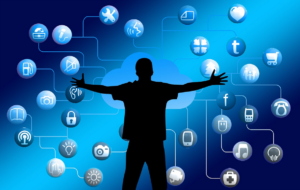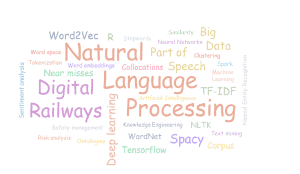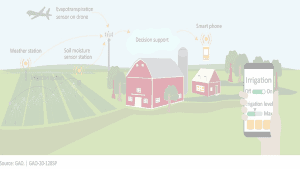How Big data is changing our lives in the digital revolution
One of the most fascinating aspects of Yorkshire is the numerous vestiges on its landscape of one of the most important historical landmarks: the Industrial Revolution. Huge mills with magnificent smokestacks, witnesses over time of the transformation that the British society experienced due to the abundant coal that powered the steam engines. A few decades later, the discovery of new energy sources (such as gas and oil) and new modes of transport and communication (such as the plane and the radio) brought the Second Industrial Revolution, which ended with the start of World War I. During the XXI century, those “machines of green-screen” named computers were getting faster and faster, and with more memory capacity; new communication systems such as mobile phones and Internet were available to everyone, and new types of green energies were developed, also known as renewable energies. All these changes were the main ingredients of a new industrial revolution, the third one, of which we are witnesses.

The main consequence of the current industrial revolution is that we have connected different “things” (such as machines, electrical appliances, vehicles, computers and mobile devices) through communication networks to automate many types of activities. This is known as Internet of Things (IoT), where things can access Internet and exchange information between them. At the same time, society is becoming increasingly dependent on digital devices such as smartphones, tables, laptops or desktop computers. Any work activity is linked to a digital process. We socialise through social media networks such as Facebook. The education of our children is in the hands of digital tools. We use any type of online service for daily activities such as listening to music, watching TV, shopping, managing our bank accounts and doing transactions with the administration. This new “digital & intelligence” style of life is the enabler of the fourth industrial revolution, also known as the digital transformation or revolution: the fusion of the physical and the digital world.
To get a rough idea of this change, for instance, we can observe that, in 2014, around 200 million of emails and 2.46 million of messages of Facebook were sent per day; currently, Google processes 3.2 billion of searches per day (around 40.000 searches per second). 90% of this huge amount of data was created during the last two years, and it is estimated that it will rise by 40% in the coming decade. This large quantity of information generated each day by persons or “things” on the Internet is currently the new grail for most of the scientific-technical areas that cover the human knowledge.
The race to know how to take advantage of these data has triggered the fast development of technologies and analysis techniques under the umbrella of Big Data. Big Data is not a new concept. It emerged at the beginning of the century with the aim of analysing huge amount of data from diverse sources. It is like when you cannot use Excel because it has a limit of 1.999.999.997 rows and columns per spreadsheet. From the beginning, Big Data has been focused on solving problems that required large datasets such as the study of the human genome. That means that all efforts were focused on how to store and access big datasets and how to speed up its processing using networks of computers (parallel computing). However, in the digital revolution, Big Data acquires new nuances. It is not just technology, such as databases or high performance computers. It is the pillar that connects different disciplines. Currently, Big Data is a strategy rather than a product, with an estimated impact of 216 billion of pounds in the British economy during the period 2012-2017.

During this digital transformation, Big Data is proving to be extraordinarily effective in businesses such as banking or online sales, but it is rapidly expanding to other areas like railways. The digitalization of the railway transport is producing a massive amount of data and it is a priority to take advantage of it in order to enhance customers experience and safety. Imagine, for instance, the benefits of combining information such as data from train recorders that store information of how a train driver drives the train; data from signalling systems such as the state of railway signal; the information from near misses that describe events that might cause future accidents; data from tickets machines to estimate the number of passengers on the platforms; weather data from the railway network such as track sections or stations where it is raining; data from social networks such as Twitter of Facebook that describe anomalies like overcrowded stations due to a concert or a football match. The exceptional benefits of analysing this huge amount of data can be from improving the services such as selling tickets that offer a seat close to Facebook or Twitter friends travelling in the same train, to identifying sequences of events that can enhance traffic management, maintenance and railway safety with the aim of preventing accidents. Developments worthy of the fourth Industrial Revolution in the railway transport.
By Dr Miguel Figueres-Esteban, Research Fellow, Institute of Railway Research, University of Huddersfield. SRUK Yorkshire Constituency.
On the media:
http://elpais.com/elpais/2016/11/23/opinion/1479909903_510460.html
http://tecnologia.elpais.com/tecnologia/2016/09/23/actualidad/1474647362_976680.html
http://www.railtechnologymagazine.com/Comment/big-data-risk-analysis-for-rail
http://www.iceotope.com/tag/big-data-technology/
http://primeurmagazine.com/weekly/AE-PR-09-16-36.html
http://www.publications.parliament.uk/pa/cm201516/cmselect/cmsctech/468/468.pdf






